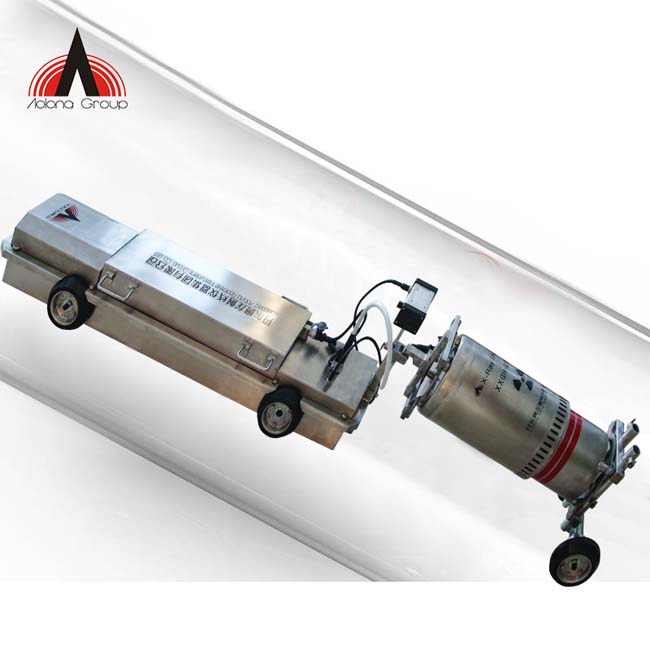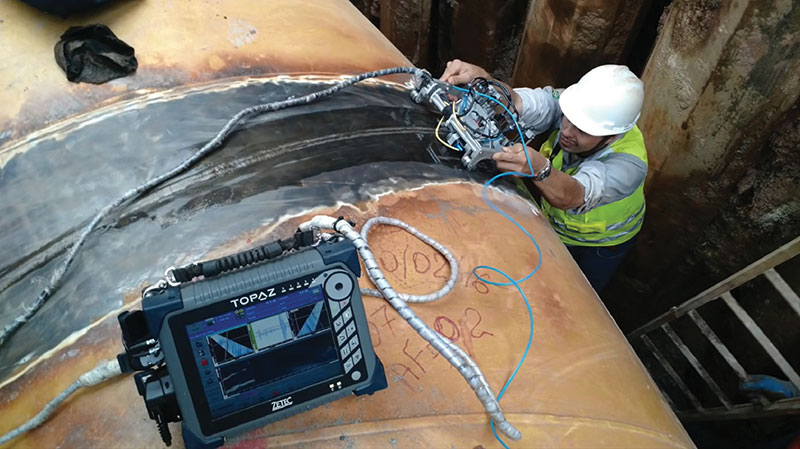Enhance Your Job: Trusted Pipeline Welding Inspection Specialists at Your Solution
Wiki Article
Making Best Use Of Effectiveness: Pipeline Welding Examination Finest Practices
By applying best practices for pipeline welding assessment, companies can simplify processes, decrease mistakes, and boost project timelines. The meticulous interest to detail needed in welding assessment holds the vital to the long-term sturdiness and dependability of the pipelines, making it a subject of utmost value in the market.
Value of Efficient Welding Evaluations
Effective welding assessments play a critical role in ensuring the structural integrity and safety of pipes. Correct inspections are vital to determine any type of flaws, stoppages, or blemishes in the bonded joints that can endanger the total stability of the pipe system. By carrying out detailed examinations, assessors can discover issues early, stopping prospective leaks, ruptures, or failings that can have significant ecological and safety effects.Prompt and precise welding examinations additionally assist in preserving compliance with industry requirements and guidelines. Sticking to these standards is not just a legal requirement yet also an essential action to ensure the reliability and longevity of the pipes. Additionally, efficient examinations can add to cost financial savings by lessening the requirement for pricey repair services or replacements as a result of welding flaws that could have been protected against or remedied during the assessment process.
Making Use Of Technology for Examinations
To improve the efficiency and precision of pipeline welding examinations, the combination of advanced modern technologies has actually come to be increasingly imperative in making sure exact and extensive analyses of welded joints. Using modern technology for inspections provides many benefits, consisting of increased efficiency, improved precision, and boosted precaution. One of the essential technical developments in pipeline welding assessments is making use of automated ultrasonic screening (AUT) systems. These systems can check welds quickly and accurately, offering comprehensive information on possible issues or concerns within the weld joint. In addition, remote aesthetic inspection (RVI) tools such as robotic crawlers geared up with video cameras enable examiners to gain access to and examine difficult-to-reach areas without the requirement for substantial disassembly or hands-on intervention. The application of computerized systems for data evaluation and reporting enhances the assessment process, enabling real-time information analysis and smooth paperwork. By embracing these technical options, pipeline welding evaluations can be conducted better, bring about better welds, boosted general safety, and reduced job timelines.Establishing Clear Examination Protocols
Establishing clear inspection protocols is crucial for making certain uniformity and integrity in the pipe welding assessment procedure. These protocols function as a collection of standards that outline the particular actions, standards, and techniques to be followed during assessments. By plainly specifying the inspection protocols, all examiners included in the process can comprehend their duties and roles, resulting in a much more effective and standard examination operations.
Regular testimonial and updates to the evaluation procedures are likewise vital to adapt to altering industry standards and requirements. By continually refining and enhancing the methods based upon feedback and lessons discovered, pipeline welding evaluations can promote the best standards and governing compliance.
Training and Certifications for Assessors

Training and qualifications for inspectors are extremely important in making sure the proficiency and proficiency of people entrusted with looking after pipe welding procedures - Pipeline Welding Inspection. Appropriately trained assessors possess the required understanding and abilities to properly examine weld quality, adherence to welding treatments, and compliance with market requirements and policies
Certifications, such as those supplied by the American Welding Culture (AWS) or the American Petroleum Institute (API), confirm an assessor's knowledge and ability to execute assessments to the highest possible requirements. These certifications frequently call for rigorous training, exams, and ongoing expert growth to guarantee that inspectors remain existing with the most up to date innovations in welding technology and assessment strategies.
Along with formal qualifications, continual training programs play an important duty in enhancing examiners' abilities. These programs cover a vast range of topics, including welding processes, flaw discovery, safety protocols, and appropriate codes and requirements (Pipeline Welding Inspection). By spending in thorough training and certifications for inspectors, business can support the stability of their pipe welding jobs and minimize the threats connected with subpar welds
Constant Enhancement in Assessment Procedures
Building upon the click now foundation of licensed and qualified inspectors, constant renovation in inspection processes is necessary for making certain the recurring top quality and conformity of pipe welding operations. By executing a system of continuous improvement, pipeline welding inspection procedures can advance to fulfill the altering demands of the industry, technical innovations, and regulative needs. This includes consistently assessing and examining examination devices, procedures, and techniques to identify locations for enhancement.One trick element of continuous renovation in assessment processes is comments. Collecting input from assessors, welders, designers, and other stakeholders permits a thorough evaluation of existing methods and the recognition of prospective areas for enhancement. In addition, leveraging analytics and information can offer beneficial insights right into the effectiveness of assessment processes, making it possible for notified decision-making for optimization.
Furthermore, purchasing training and growth programs for inspectors can make sure that they are equipped with the current expertise see this and skills to do their duties effectively. Continual improvement is a dynamic procedure that requires dedication and commitment from all stakeholders to drive quality in pipeline welding evaluation techniques.
Conclusion
Finally, making best use of effectiveness in pipeline welding inspections is critical for making sure the quality and safety and security of facilities projects. By making use of innovation, establishing clear procedures, providing correct training and accreditations for assessors, and constantly boosting evaluation procedures, organizations can streamline their operations and minimize threats. It is important for industries to prioritize effective welding evaluations to preserve high criteria and satisfy governing requirements.
Effective inspections can contribute to set you back savings by lessening the demand for pricey repair services or substitutes due to welding problems that might have been protected against or fixed throughout the examination process.
Establishing clear assessment methods is crucial for making certain consistency and integrity in the pipe welding inspection process. By plainly specifying the examination protocols, all inspectors entailed in the procedure can recognize their obligations and functions, leading to an extra reliable and standardized inspection process.
Clear examination methods aid in reducing the likelihood of errors or oversights during the evaluation process.Building upon the foundation of qualified and licensed examiners, constant enhancement in evaluation processes is vital for making sure the continuous high quality and compliance of pipe welding procedures.
Report this wiki page